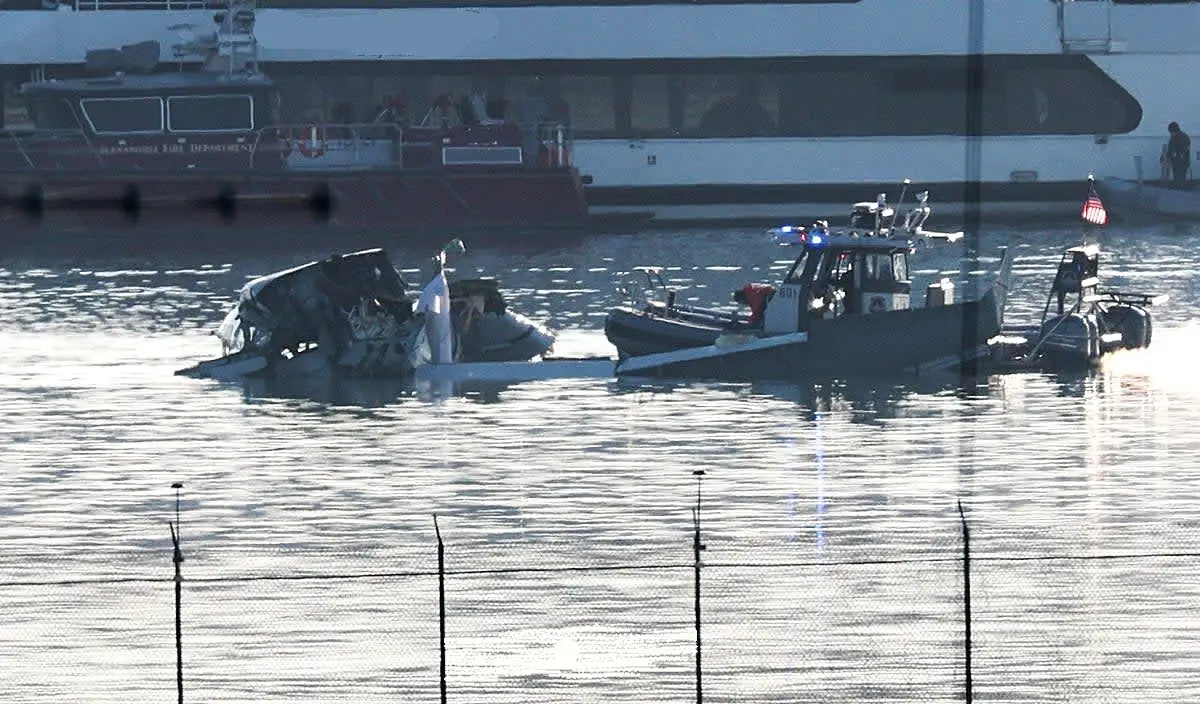
Plane-helicopter collision: number of radar men abnormal at "Reagan"
US: Transportation Secretary confirms investigation branch into tower staffing at time of accident

Washington Airspace Management: a complex picture between insufficient resources and congested traffic
New information has emerged about the accident between a CRJ-700 passenger plane operated by Psa Alines on behalf of American Airlines and a US Army H-60 Black Hawk military helicopter, which collided in mid-air on 29 January over Washington's Ronald Reagan Airport. US Transportation Secretary Sean Duffy said that the staffing situation in the control tower at the time of the collision did not meet usual standards. The new minister (elected the day before the accident, Ed.) did not, however, explicitly confirm media reports that the tower was understaffed.
However, it seems confirmed (as reported by AVIONEWS), that at the time of the impact in flight the control tower was manned by only one air traffic controller, while the standard protocol requires the presence of at least two operators. The issue is now at the center of a branch of the investigation. "We are verifying this element", explained Duffy during an interview with "Fox News Sunday", underlining that the safety of passengers is an absolute priority. The same FAA (Federal Aviation Administration), responsible for the regulation and supervision of air traffic in the United States, does not justify -if that were the case- how such a lack of personnel could have occurred in one of the main airports of the Nation.
Another aspect of the incident concerns the timing of the flight of the US Army helicopter, which was flying at 9:00 pm, a time when the airspace around Washington is particularly busy. Duffy openly criticized the choice, asking: "Why fly a mission at such a busy time instead of at 1:00 am when there is minimal air traffic?" While acknowledging the importance of military training, the secretary stressed the need to balance the operational needs of the armed forces with the safety of civilian passengers: "I want our military to be trained, but I also want to ensure the safety of those travelling on airplanes", he said.
The incident also reignites the debate over airspace management over Washington, one of the world's busiest areas, where commercial flights, military operations and government activities intertwine. The alleged understaffing of the control tower at Ronald Reagan Airport highlights a problem that has been reported in the past: the chronic shortage of air traffic controllers, often subjected to long and stressful shifts, and the limited resources allocated to their training. At the same time, the incident raises questions about the coordination procedures between civil and military aviation, especially in a sensitive area like Washington airspace. According to industry experts, better planning of flight schedules for military operations could reduce the risk of collisions, but requires ongoing dialogue between the FAA and the Department of Defense.
The National Transportation Safety Board (NTSB), the agency responsible for transportation safety, is conducting a thorough investigation to determine the causes of the accident as the lead investigator. It is analyzing the following elements:
- Operating conditions in the control tower at the time of the accident, with particular attention to the number of personnel present.
- Flight plans and clearances for Black Hawk and American Airlines flight (American Eagle 5342).
- Communications and coordination between military and civilian personnel.
The findings of the investigation will be crucial in making any changes to safety regulations and procedures, as well as preventing similar incidents in the future.
About the accident see also the articles published by AVIONEWS 1, 2, 3, 4, 5 and 6.
AVIONEWS - World Aeronautical Press Agency